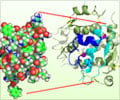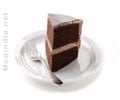High Fructose Corn Syrup (HFCS) and Diabetes
High fructose corn syrup (HFCS) is a corn -based sweetener that has been processed to convert its sucrose into fructose to produce the desired sweetness. It is used mostly as a sugar substitute for soft drinks and baked goods. There are many varieties of HFCS depending on their fructose content. For example, HFCS42 contains 42 percent fructose and 53 percent glucose. HFCS55, used in soft drinks and fruit drinks, contains 55 percent fructose and 42 percent glucose.
HFCS, introduced in the late 1960s, represents more than 40 percent of sweeteners added to various foods and beverages. And in the US it is reported to be the sole caloric sweetener for soft drinks and fruit drinks.
Although HFCS is rated ‘Generally Recognized As Safe’ (GRAS) by the US Food and Drug Administration (FDA), several studies have suggested that HFCS might be linked to increased prevalence of obesity in the world. One such study from Pennington Biomedical Research Center in the US found that consumption of sweetened beverages, especially HFCS sweeteners, may enhance caloric over-consumption which is directly related to weight gain and obesity which can consequently lead to type-2 diabetes.
Another study published in the journal Current Hypertension Reports found that HFCS consumption can produce some of the changes associated with metabolic syndrome even without increasing the body weight.
This is how the scientists established the link between HFCS and diabetes. HFCS is a mixture of sugars – glucose and fructose. Being a monosaccharide sugar, glucose is directly transported in the blood and used up as energy. So, unless you expend it through vigorous work outs or physical activity, the glucose remains in the blood.
Similarly, fructose is also a monosaccharide sugar but it is different from glucose in the sense it forms the primary carbohydrate in most fruits. However, fructose does not stimulate insulin secretion, which means, insulin is not required to transport fructose into cells. A perfect recipe for insulin resistance!
Earlier studies had established that fructose is readily converted to fatty acids but the link between fructose consumption and insulin resistance was missing. The evolving research shows that the body reacts differently to HFCS than it does to other types of sugars.
Scientists from Yale University School of Medicine discovered the gene (PGC-1beta) responsible for boosting SREBP-1 levels and other fat-building genes that regulate the manufacture of lipids in the liver. High consumption of fructose led to increased activity of PGC-1beta, thereby metabolizing fructose to fat in the liver leading to non-alcoholic fatty liver disease (NAFLD). NAFLD in turn leads to insulin resistance and then to type-2 diabetes.
Since diabetes requires a strict control over blood glucose and insulin levels, safe bet would be to restrict consumption of HFCS in the form of sugary non-diet sodas or fruit drinks and other HFCS added beverages.









